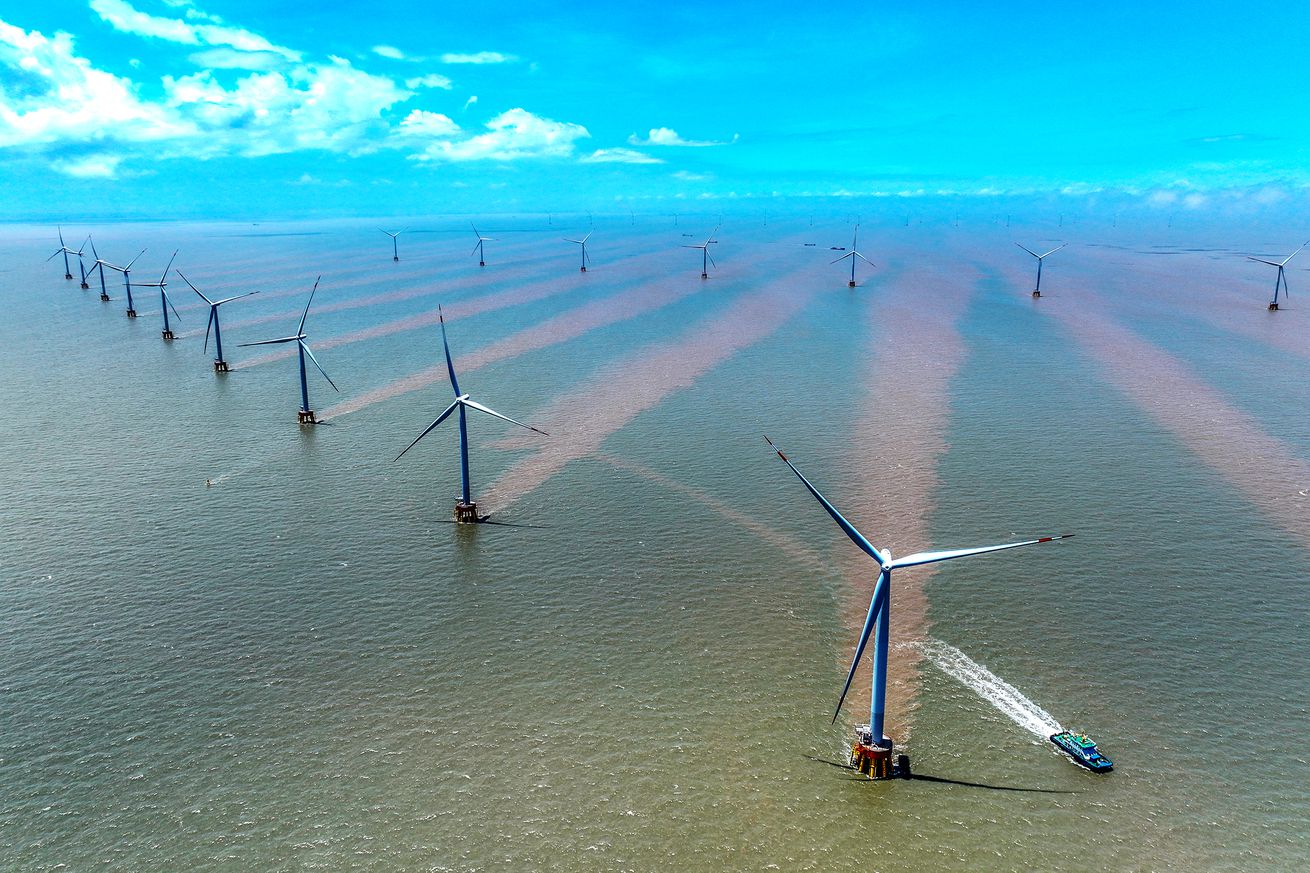
Wind energy is recovering from a 2022 slump
The wind energy industry is recovering from a worrying slump in 2022, according to a new report from BloombergNEF. Growth in global capacity — encompassing offshore and onshore wind — dropped 15 percent last year. The decline in new offshore wind installations was more stark, falling 46 percent from 2021.
Until last year, winds looked favorable for the industry. Turbines have gotten significantly cheaper over the past couple decades. Governments are setting targets to bring more renewable energy online. And within a few years, renewable sources of electricity like wind and solar are expected to dominate global power sector growth.
Nevertheless, after two years of record growth at the start of the decade, supply chain constraints and regulatory uncertainty took their toll on the wind industry in 2022. Developers added 86 gigawatts of wind turbines globally last year compared to around 100 gigawatts in 2020 and 2021.
“It’s certainly a warning sign for governments around the world”
“It’s certainly a warning sign for governments around the world,” says Oliver Metcalfe, head of wind research at BloombergNEF (BNEF). “Even as government ambition increases, we’re seeing new additions slow on the ground … ambition isn’t enough.”
Inflation hit manufacturers and project developers hard last year. Rising costs for shipping and key materials, including steel and resin, made it more expensive to complete projects. A lot of players in the industry were locked into old contracts that hadn’t accounted for those hurdles. “That left wind turbine makers in a difficult spot, having to deliver on prices they’d agreed to previously in a much higher cost environment,” Metcalfe says. Those troubles trickled on to developers, some of whom even tried to renegotiate contracts with utilities because of the rising costs.
Those price pressures have started to ease, but the sector also had to worry about losing tax incentives that have been a huge boon to the industry, especially in China and the US. Those two countries are the biggest markets for wind energy and were also responsible for much of the slump in installations last year. China ended a national subsidy for offshore projects at the end of 2021. That drove a boom and bust cycle as developers tried to cash in on the subsidy in 2021 and then slowed down in 2022. In the US, a key tax credit for wind projects was set to expire in 2022. Luckily for the sector, the Inflation Reduction Act signed into law last August extended those credits.
The Biden administration also ramped up efforts to bring offshore wind to more shorelines along the US, auctioning leases for wind farms off the coasts of New York, New Jersey, North and South Carolina, and California. The Netherlands, Germany, and the UK have big projects in the works, too, as do newer markets like Taiwan and France. Metcalf is confident that offshore wind installations will rebound this year and could even see record growth again.
Even so, it won’t be entirely smooth sailing ahead. There’s a looming shortage of ships capable of installing behemoth turbines at sea. Outside of China, there are still huge delays when it comes to permitting projects and getting them hooked up to the grid. Fishing communities and tribes have protested projects moving ahead without addressing concerns about how wind farms would affect their cultures and the environment.
Those are all headwinds the industry and governments will have to face before wind energy can really take off. For now, it makes up less than 7 percent of the world’s electricity generation.

